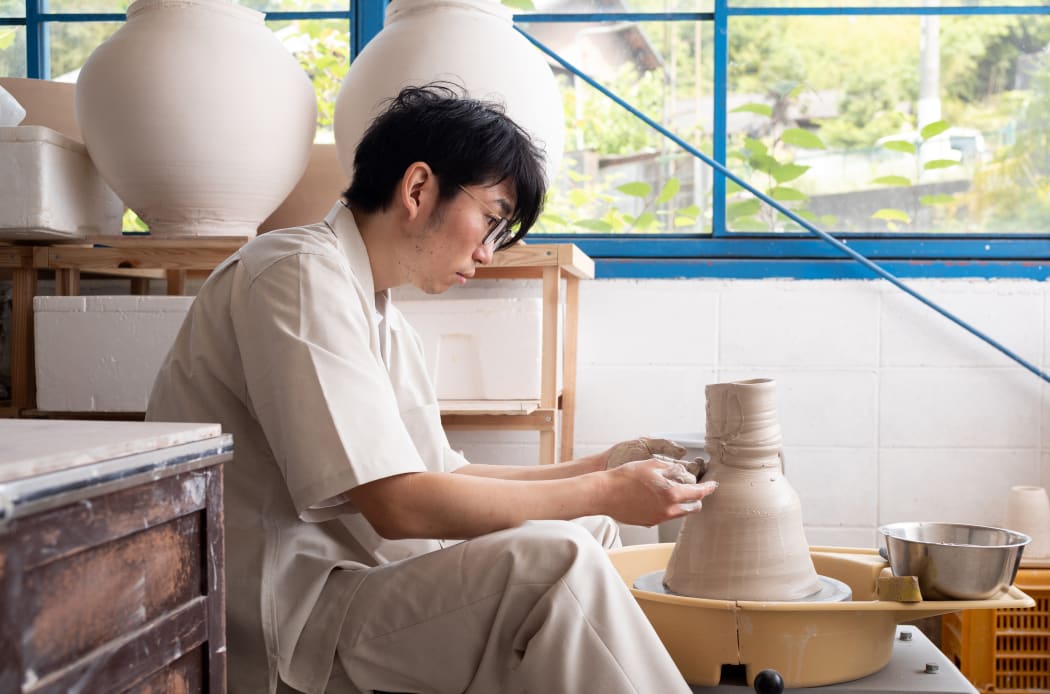
Skin & Body: Crazing Vessels by Kodai Ujiie opens tonight from 6:00–8:00PM at Ippodo Gallery on 32 E 67st., 3rd floor.
The artist, who has traveled from his home in Gifu Prefecture, Japan to attend in person, will speak about his technique and themes. Kodai Ujiie answered eleven questions about his life, process, and signature style. He also welcomed Ippodo Gallery into his studio for a special sneak peak behind the scenes of this magnificent showing of kanyuu ceramics.
The following question and answer is a translation from the original Japanese.
Question 1: For those who might be unfamiliar with your work, can you explain what inspired this most recent collection?
Kodai Ujiie: My current inspiration is rooted in my experience at Design Miami and Art Basel last year, where I participated as a principal artist represented by Ippodo Gallery. It allowed me to immerse myself in a diverse world of art, artists, and designs from across the globe, ultimately deepening my awareness of my role as an artist.

Scenes from Kodai Ujiie's studio in Gifu Prefecture, Japan
Question 2: How might you see that your work has changed over the last few years?
Kodai Ujiie: Over the past seven years, my perspective as a creative individual has transformed. It all began with my declaration during a conversation with Mr. Glenn. I expressed my intention to create 'globally open tea bowls' and explore how Japanese traditional craftsmanship, kogei, is embraced worldwide. However, my outlook shifted significantly after experiencing the 'diversity of art' at Design Miami last year. Now, I constantly reevaluate what 'global' truly means in this context. As my perspective and intentions continue to evolve alongside my experiences, I eagerly look forward to my next creative journey.

Kodai Ujiie sculpting in his studio in Gifu Prefecture, Japan
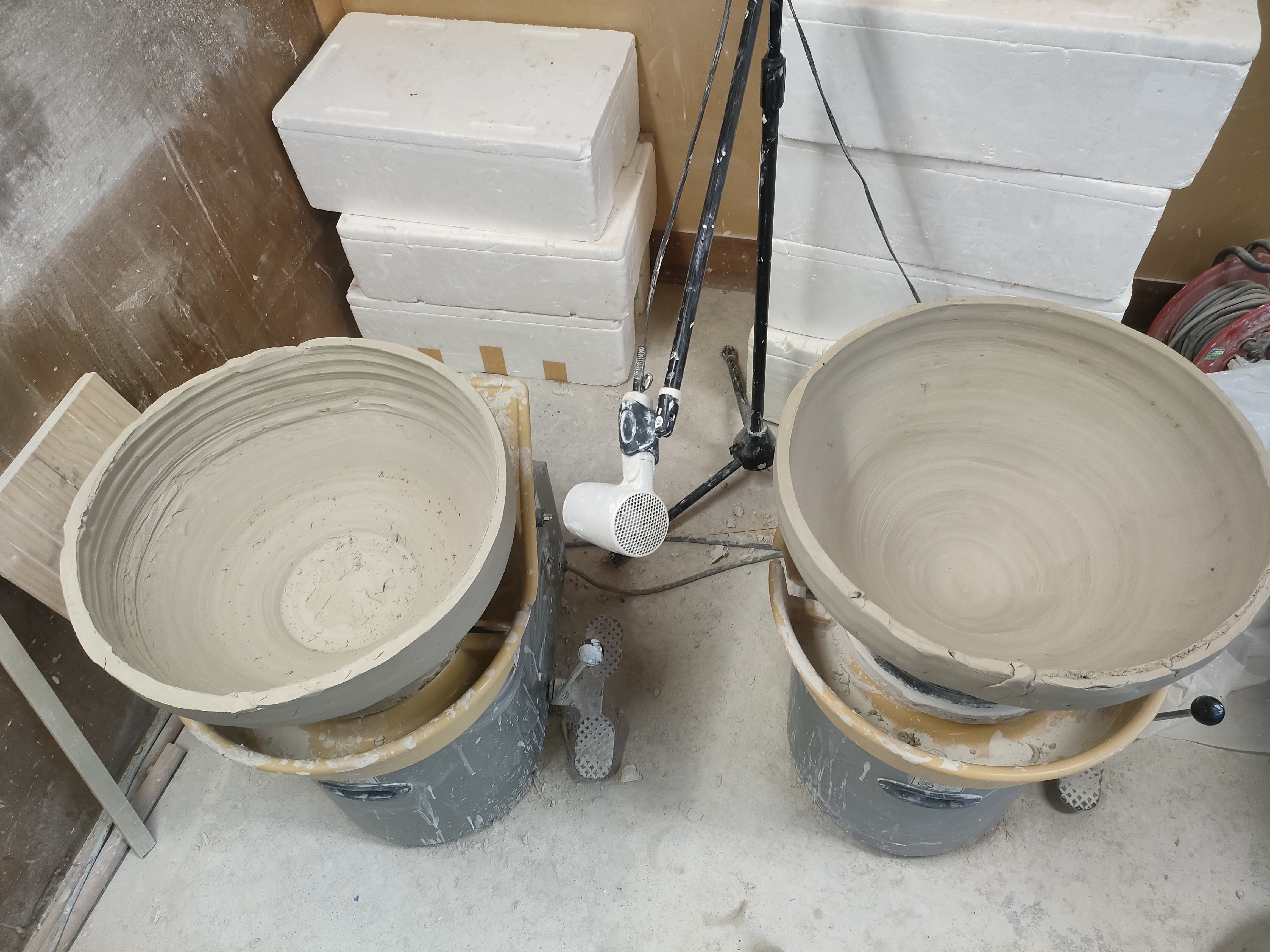
Kodai Ujiie unfired work in Gifu Prefecture, Japan
Question 3: Ujiie’s works may be considered 'avant-garde,’ but in sensei’s own words, please describe your artistic approach and what other works of art might influence your artistic vision.
Kodai Ujiie: I don't believe I consciously lead the 'avant-garde art' movement. In fact, my past series have adhered to traditional ceramic techniques. However, my birth and background have influenced my unique designs. Within the strict framework of Japanese ceramics, I may consciously seek to create an unstable structure. These elements 'instability' and 'imperfection'also connect to Zen philosophy and Eastern philosophy, and they may hold clues to unraveling the global context.
I've been inspired by Sen no Rikyū, one of Japan's greatest tea masters.
During his time, there was a preference for extravagant tea utensils from overseas and the use of precious materials like gold. However, Rikyū advocated for domestically produced, primarily black-colored tew bowls that appeared modest. Additionally, he insisted that people entering the tearoom should not be discriminated against based on their social status. Considering how his theory spread in Japan, I believe Rikyū successfully facilitated a transformation of values similar to the contemporary post-modern era.
I contemplate what values artists and users can resonate with within the current broad contemporary context. I aim to be a key player in the recent shift of values and am engaged in my creative work with that goal.
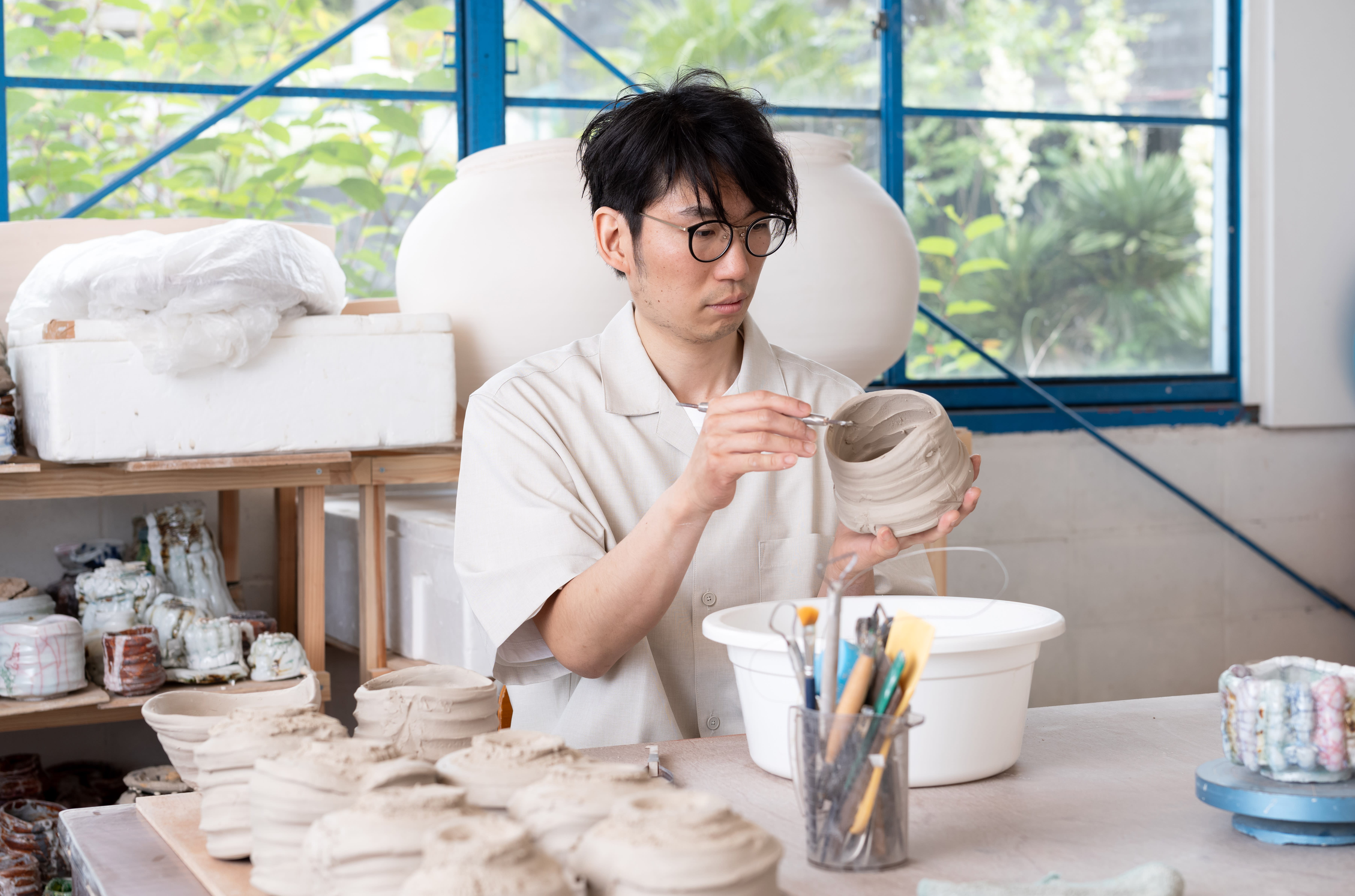
Scenes from Kodai Ujiie's studio in Gifu Prefecture, Japan

Scenes from Kodai Ujiie's studio in Gifu Prefecture, Japan
Question 4: You have mentioned you’re often inspired by organic elements, such as the scales, texture of the skin, and cells, etc. Are there any specific animals or elements that are particularly compelling?
Kodai Ujiie: I don't intentionally focus on specific animals; I find the texture and shapes of my imaginary animals. Last year, I visited Ise Shrine and the ancient trees, with their millennia-old bark. Being in a place so profoundly connected to Japan's historical culture, the texture of those aged trees' bark made me feel their sacredness and uniqueness, embodying the passage of time in a truly exceptional way.

Kodai Ujiie (1990-present), Karatsu Lacquer Medium Jar, 2023, C26230
Question 5: Your artwork is quite striking in color and form. What messages do you hope your ceramics convey to an audience?
Ujiie: I hope my art serves as a metaphor for new bodies or physical experiences.

Kodai Ujiie's unfired work at his studio in Gifu Prefecture, Japan
Question 6: Why is it that your recent work is more dynamic in color and texture and more open-mouthed in form?
Kodai Ujiie: The recent transformation in my artwork finds its roots in my experience at Art Basel last year. The rich diversity of art I encountered left a profound mark on me and pleasantly challenged my conventional views on craftsmanship. In Japan, there's a strong emphasis on precision and intricacy within traditional crafts, which sometimes can feel restrictive. It's almost as if there's an unspoken expectation to craft only "solid" pieces inherent to the craft art itself. Embracing a more open and liberated approach to craftsmanship has naturally resulted in wider mouths and imbued my pottery forms with a more distinct and unique style.

Scenes from Kodai Ujiie's studio in Gifu Prefecture, Japan
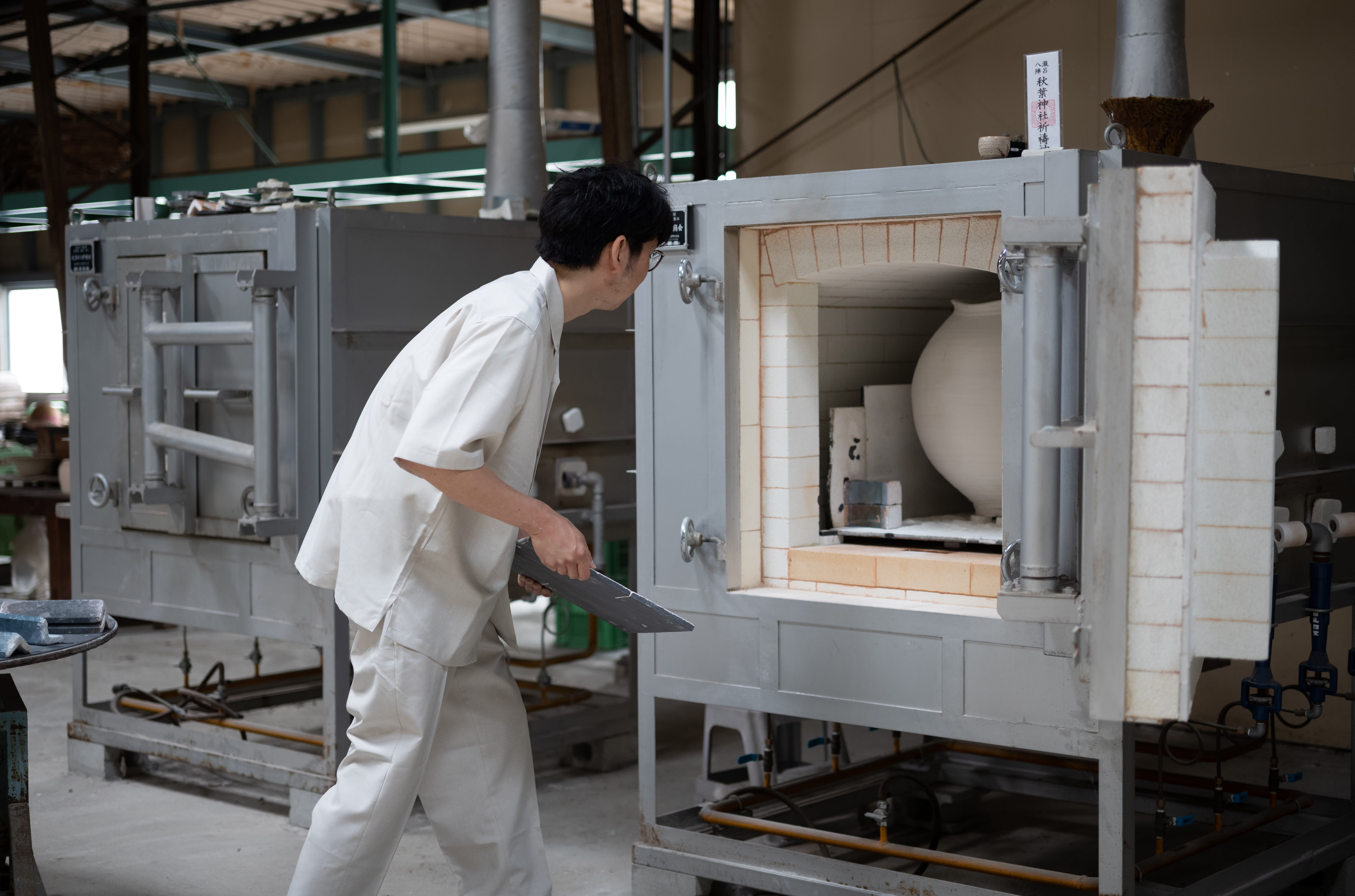
Scenes from Kodai Ujiie's studio in Gifu Prefecture, Japan
Question 7: Might Ujiie-sensei walk us through some of his signature techniques? Are there any specific setups for the kiln or conditions considering the varying thickness of the porcelain?
Kodai Ujiie: Let me provide a bit of an explanation.
I aim to create designs where colored lacquer is soaked into the penetrations, allowing us to feel a lifelike vitality, like blood vessels.
ii. Kairagi
Kairagi refers to applying the final glaze thickly, causing the surface to crack due to differences in the shrinkage between the base and the glaze. This crack presented to resemble scales.
iii. Porcelain Pieces
Using two types of glaze, one that flows and one that does not, and applying the non-flowing liquid thickly, the shape remains intact when fired, becoming the form of the sculpture. When combined with the flowing glaze, it creates complex expressions.
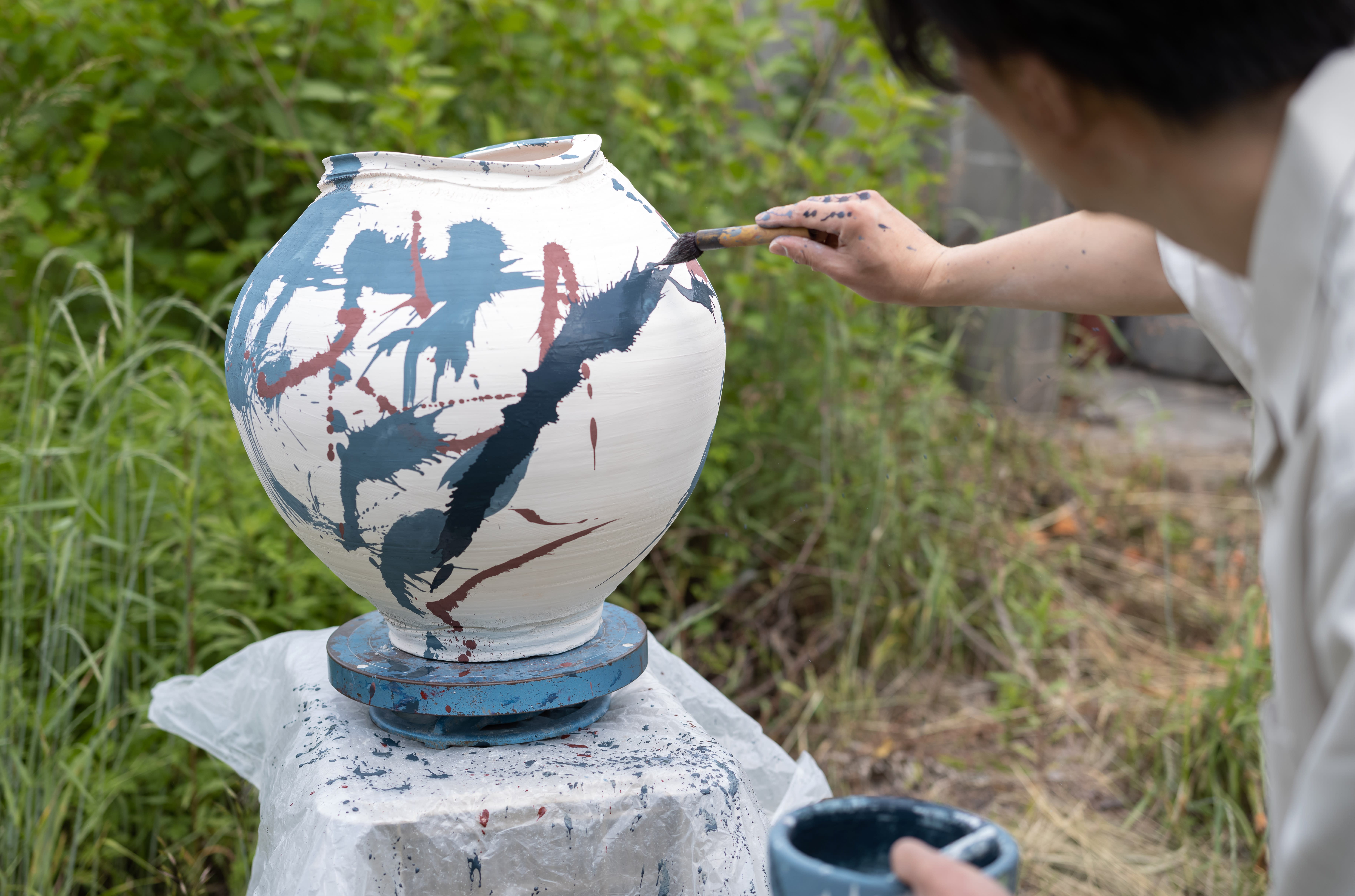
Scenes from Kodai Ujiie's studio in Gifu Prefecture, Japan
Question 8: Do you see yourself incorporating traditional tea elements, or maybe Ujiie-sensei sees himself as someone who breaks the mold?
Kodai Ujiie: I prefer to maintain a delicate balance rather than definitively choosing one perspective over the other. The traditional tea world demands a lifelong journey to fully grasp aspects such as cultural significance, historical context, spirituality, and intricate design. I deeply respect historical elements and strive to integrate them into my work seamlessly. Throughout this process, I am dedicated to preserving contemporaneity, global relevance, and the persuasive power of individuality. My ultimate goal is to strike a harmonious balance, enriching my work with historical context, contemporaneity, and personal expression.
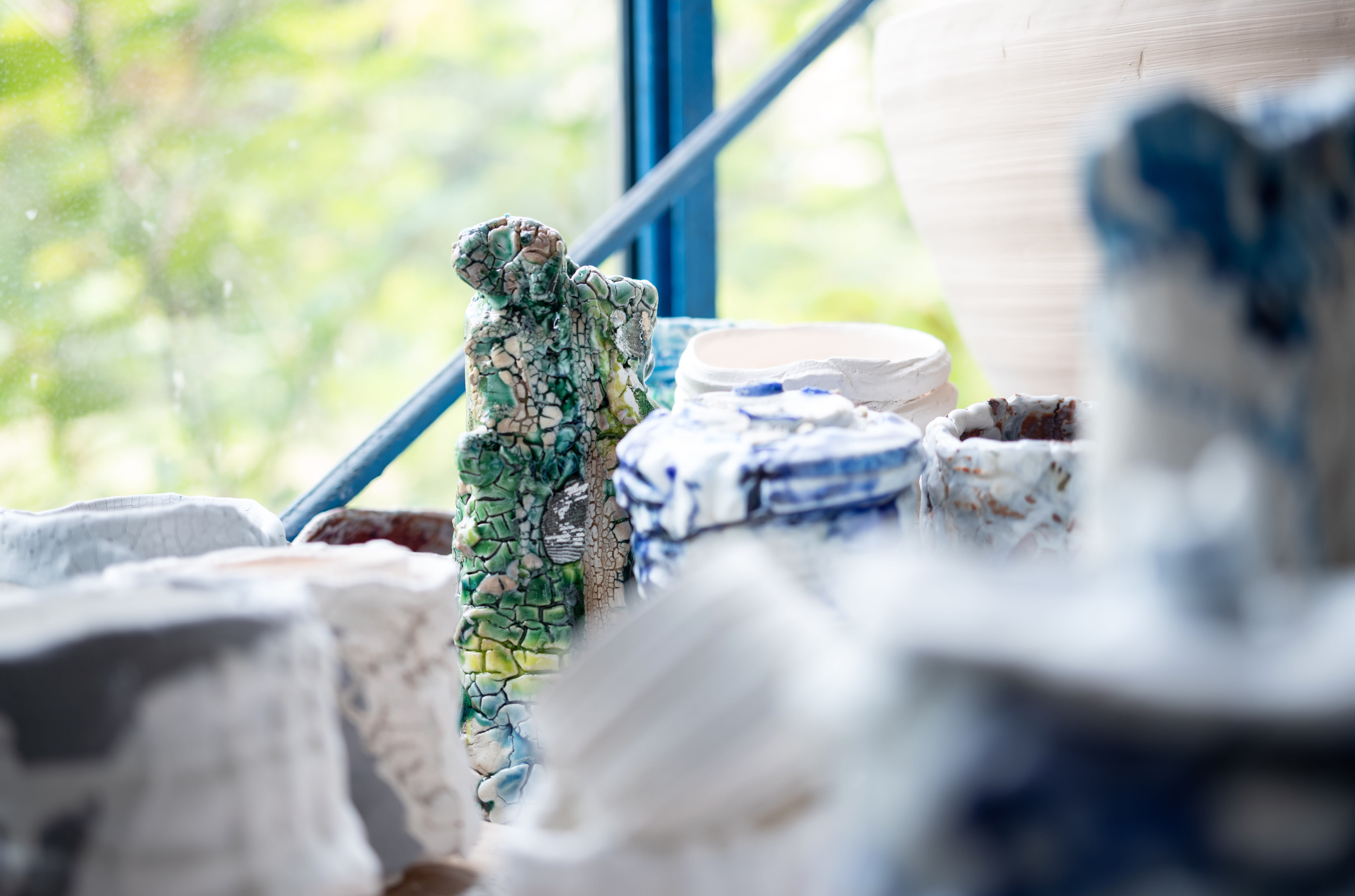
Scenes from Kodai Ujiie's studio in Gifu Prefecture, Japan
Question 9: Can you share a significant obstacle you encountered and how you overcame it?
Kodai Ujiie: One of the most challenging experiences was the 2011 Tōhoku earthquake and tsunami, which struck my hometown. It was a period of deep conflict and fear as I felt the imminent threat of death. However, this experience profoundly changed my perspective on life. I realized the importance of always being prepared for the possibility of death and living my life without regrets. This realization began a new phase of my artistic endeavors, driven by a renewed sense of purpose and determination.

Kodai Ujiie (1990-present), Oribe Lacquer Medium Jar, 2023, C26229
Question 10: In your opinion, what is the most rewarding aspect of being a ceramist?
Ujiie: The most rewarding aspect of being an artist would be the continuous opportunities that allow me to challenge myself.

An old work from Kodai Ujiie's studio in Gifu Prefecture, Japan
Question 11: As a young artist, are there any specific projects or collaborations you hope to explore in the coming years?
Ujiie: So many art world audiences may have seen Generation Z's emerging influence in art and technology. In my art world circle, I've noticed that younger, emerging artists are particularly drawn to these fields. While my interest in collaboration or integrating such technology into my projects may be a separate consideration, I would like to maintain a flexible approach to those new technologies and cultural trends.
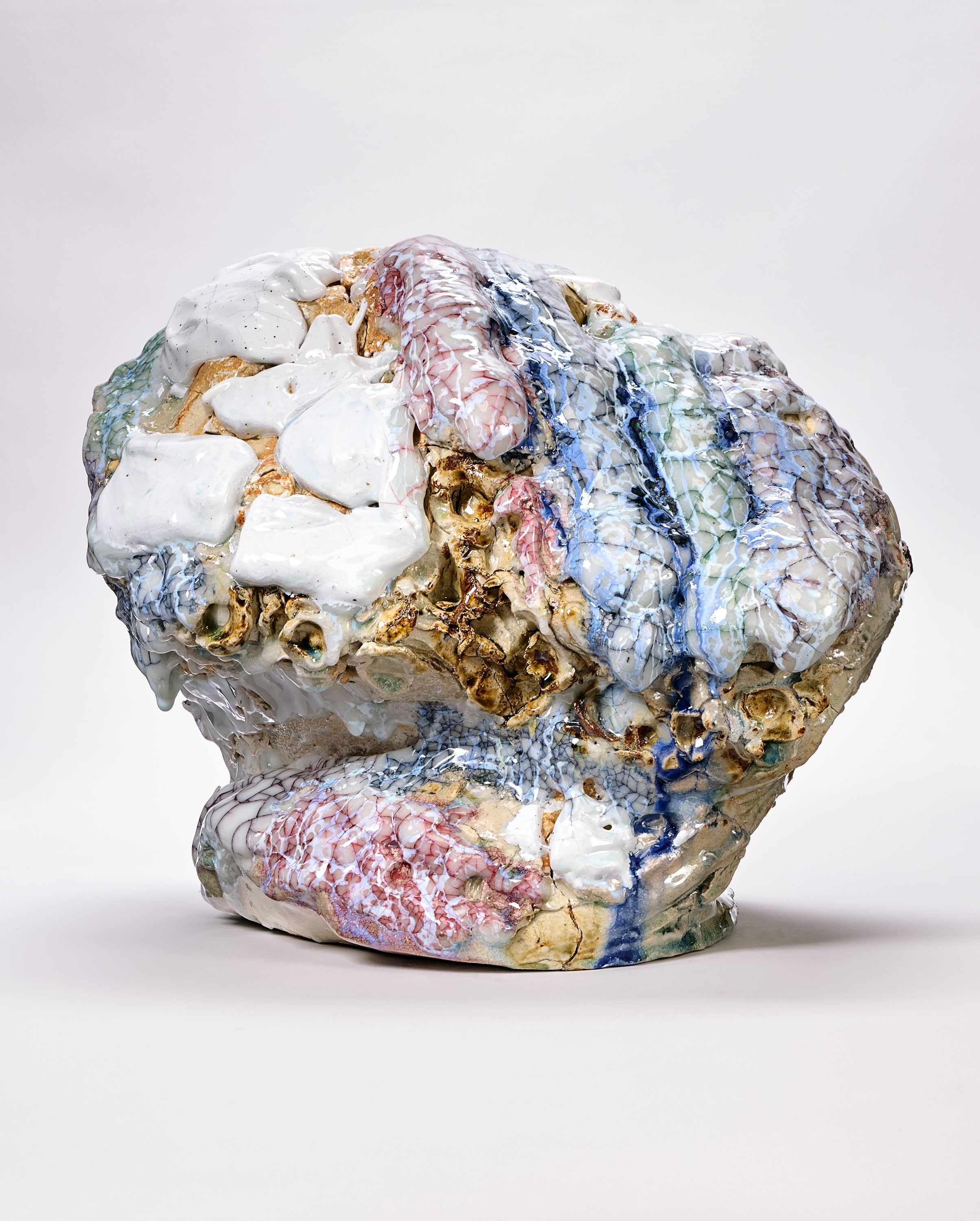
Kodai Ujiie (1990-present), Skin (White Glaze), 2023, C26227
Please join us this evening to celebrate the opening reception of Kodai Ujiie's premier solo exhibition in the United States! 46 of the artists masterful avant-garde ceramics are on view from September 14 until October 4, 2023.
